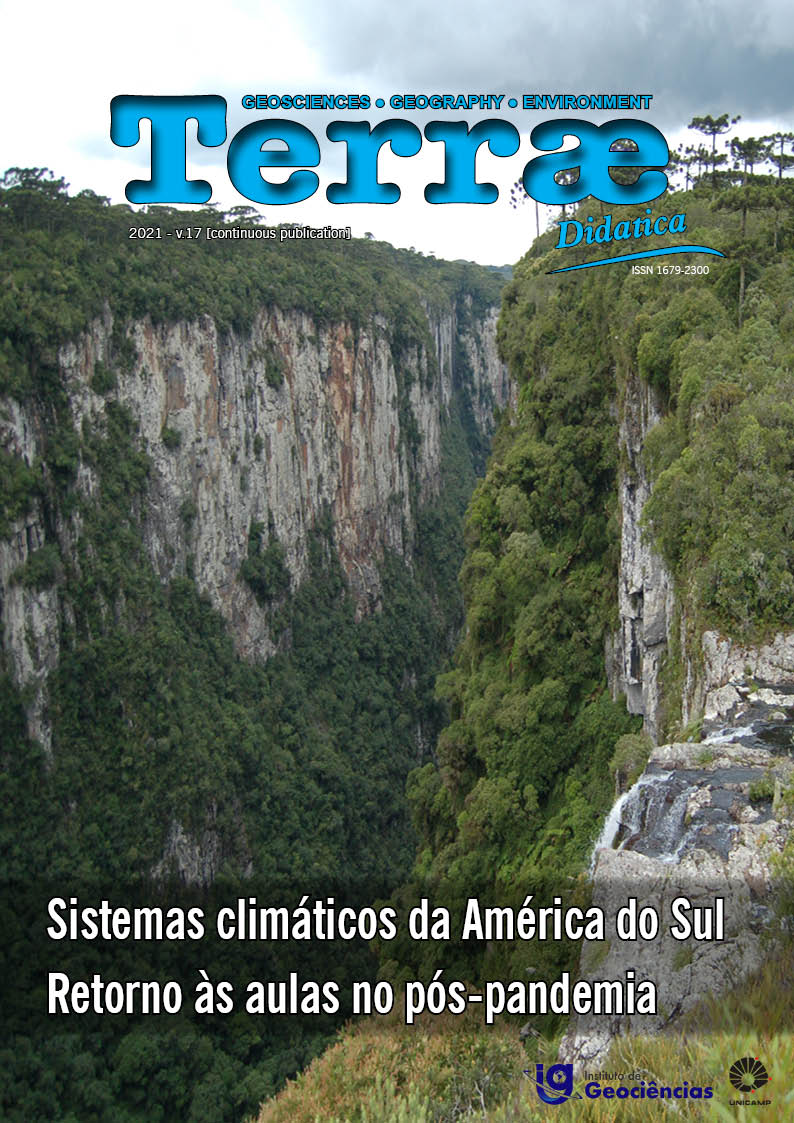Abstract
With technological advances thanks to the expansion of the oil and gas industry in the State of Amazonas, they encouraged the Federal University of Amazonas (UFAM) to create an undergraduate course in Oil and Gas Engineering in 2010. In this course, the disciplines of Geosciences are essential for the student understand the origin of hydrocarbon deposits and, subsequently, develop research, exploration and processing activities. This article describes teaching strategies based on the concept of cognitive alignment that aroused students' interest and encouraged participation in disciplines of Petroleum Geophysics and Geological Modeling with the use of: concept maps, free and / or commercial software in the classroom, assembly teaching equipment and use of virtual teaching-learning environments. The use of didactic strategies in the disciplines of Reservoir Geological Modeling and Petroleum Geophysics allowed to achieve important results in the teaching-learning process. The teaching alternatives can be replicated in other technical and higher courses in Oil and Gas Engineering.
References
Alvarenga, C. E. A. (2011). Autoeficácia de professores para utilizarem tecnologias de informática no ensino. Tese (Doutorado). Campinas, SP, Brasil, Faculdade de Educação, Universidade Estadual de Campinas. URL: http://repositorio.unicamp.br/jspui/handle/REPOSIP/251367.
Ausubel, D. P., Novak, J.D. & Hanesian, H. (1978). Educational psychology. New York: Holt, Rinehart and Winston. Trad. (1980), Psicologia educacional. Rio de Janeiro, Ed. Interamericana.
Ausubel, D.P. (2003). Aquisição e retenção de conhecimentos: uma perspectiva cognitiva. Lisboa: Plátano Ed. Técnicas. Trad. de The acquisition and retention of knowledge: a cognitive view. (2000). Klüwer Acad. Publ. Co.
Barbosa, R., & Carneiro, C. D. R. (2020). Régua de Inovação: uma ferramenta de apoio à Educação em Geociências. Terræ Didatica, 16, 1-12, e020015. doi: 10.20396/td.v16i0.8658118.
Behrens, M. A. (2013). Metodologia de Aprendizagem Baseada em Problemas. In: Veiga, I. P.A. (2013). Técnicas de Ensino: Novos Tempos, Novas Configurações. Ed. Papirus. p. 163-187.
Biggs, J. & Tang, C. (1999) Teaching for Quality Learning at University. 3rd ed. The Society for Research into Higher Education.
Conceição, T. A., & Simas, J. L. (2019). Aplicação do alinhamento construtivo a partir da validação da ferramenta Seislab para MATLAB® para uma aprendizagem significativa. Terræ Didatica, 15(2), 1-3, e019044. doi: 10.20396/td. v15i0.8657530.
Grupo de Gestão de Tecnologias Educacionais da UNICAMP. Disponível em: https://ggte.unicamp.br/wp/. Acesso em 26/04/2017.
Mello, C. H. P.; Turrioni, J.B.; Xavier, A. F.; Campos, D.F. (2012) Pesquisa-ação na engenharia: Proposta de estruturação para sua condução. Produção, 22(1), 1-13.
Mendonça, A. (2014). Teoria do Alinhamento Construtivo: fundamentos e aplicações. Disponível em http://www.academia.edu/17729627/Teoria_do_Alinhamento_Construtivo_-_Fundamentos_e_Aplica%C3%A7%C3%B5es_Andr%C3%A9a_Mendon%C3%A7a. Acesso 02.06.2020.
Mendonça, A. P. (2015). Alinhamento Construtivo. Fundamentos e Aplicações. In: Gonzaga, A. M. (Org.) (2015). Formação de Professores no Ensino Tecnológico: Fundamentos e Desafios. Curitiba: CRV. p. 109-130.
Moreira, M. A. & Buchweitz, B. (1993). Novas estratégias de ensino e aprendizagem: os mapas conceituais e o Vê epistemológico. Lisboa: Plátano Edições Técnicas.
Neves, J. L. (1996). Pesquisa Qualitativa. Características, Usos e Possibilidades. São Paulo, Caderno de Pesquisas em Administração, 1(3). (2º Semestre).
Nobre, A. G., Andrade, P. A., & Florêncio, O. (2020). Disciplinas de Geociências do Bacharelado em En-genharia de Petróleo da Universidade de São Paulo comparadas com a proposta curricular da Society of Petroleum Engi¬neers. Terræ Didatica, 16, 1-11, e020020. doi: 10.20396/td.v16i0.8657989.
Novak, J.D. & Gowin, D.B. (1996). Aprender a aprender. Lisboa: Plátano Edições Técnicas. Trad. de Learning how to learn. (1984). Ithaca, N.Y.: Cornell Univ. Press.
Plataforma Google Classroom. Disponível em: https://classroom.google.com. Acesso: 21/01/2019.
Plataforma Moodle. Disponível em: https://demo.moodle.net/ Acesso: 21/01/2019.
Ribeiro, L. R. C. (2008). Aprendizado baseado em problemas. São Carlos: UFSCAR. (Fund. Apoio Institucional).
Schlemmer, E. (2006). Avaliação de Ambientes Virtuais de Aprendizagem na perspectiva da complexidade. In. XVII Simpósio Brasileiro de Informática na Educação, (SBIE). Brasília, Universidade de Brasília (UNB)/Universidade Católica de Brasília (UCB).
Simas, J. L., & Miguel, G. F. (2019). Uso de software de projeção estereográfica como recurso para a aprendizagem significativa em um Curso de Engenharia de Petróleo e Gás. Terræ Didatica, 15(2), 1-7, e019045. doi: 10.20396/td.v15i0.8657549.
Smith, K. A. (2013). Identification and Articulation of Enduring Student Learning Outcomes. STEM Educ. Center / Technol. Leadership Inst. / Civil Eng. Univ. Minnesota & Eng. Educ., Purdue Univ. URL: http://personal.cege.umn.edu/~smith/docs/Smith-KFUPM-Cooperative_Learning-Course_Design-S2-v2.
Souza, P.R. (2016). Aprendizagem significativa e alinhamento construtivo: uma proposta para o ensino de circuitos elétricos. Dissertação de Mestrado. Manaus/AM, Instituto Federal do Amazonas (IFAM).
Zabala, A, & Arnau, L. (2010). Como aprender e ensinar competências. Porto Alegre: Artmed.

This work is licensed under a Creative Commons Attribution-NonCommercial 4.0 International License.
Copyright (c) 2021 Terrae Didatica


